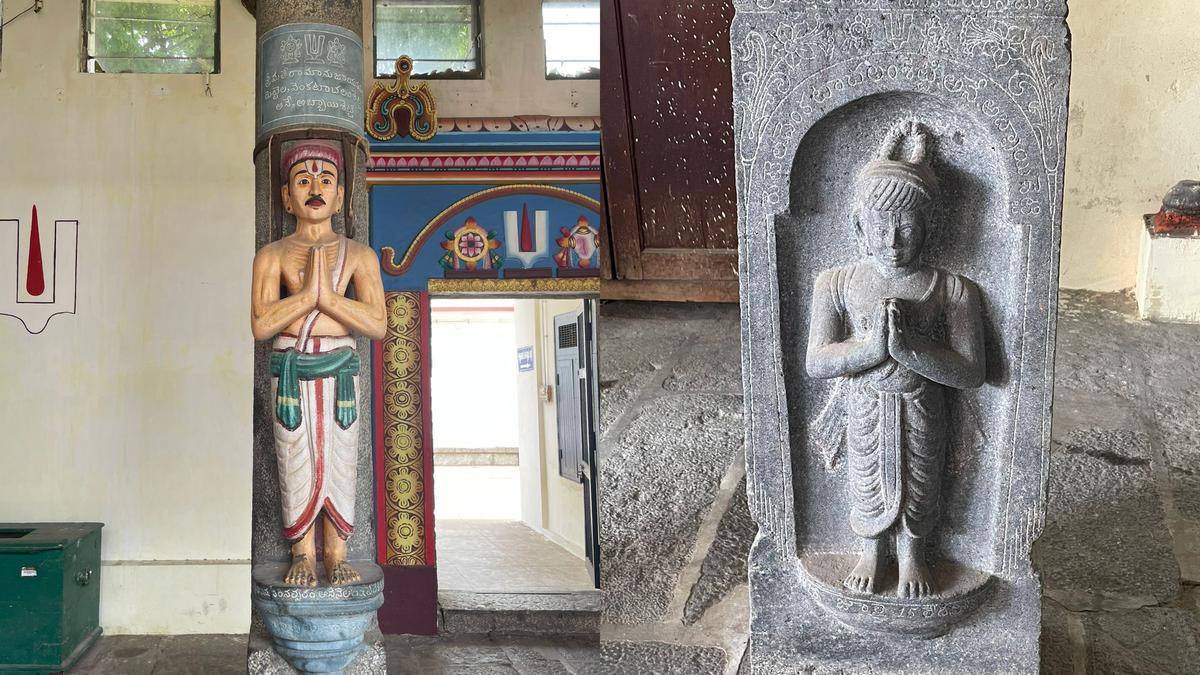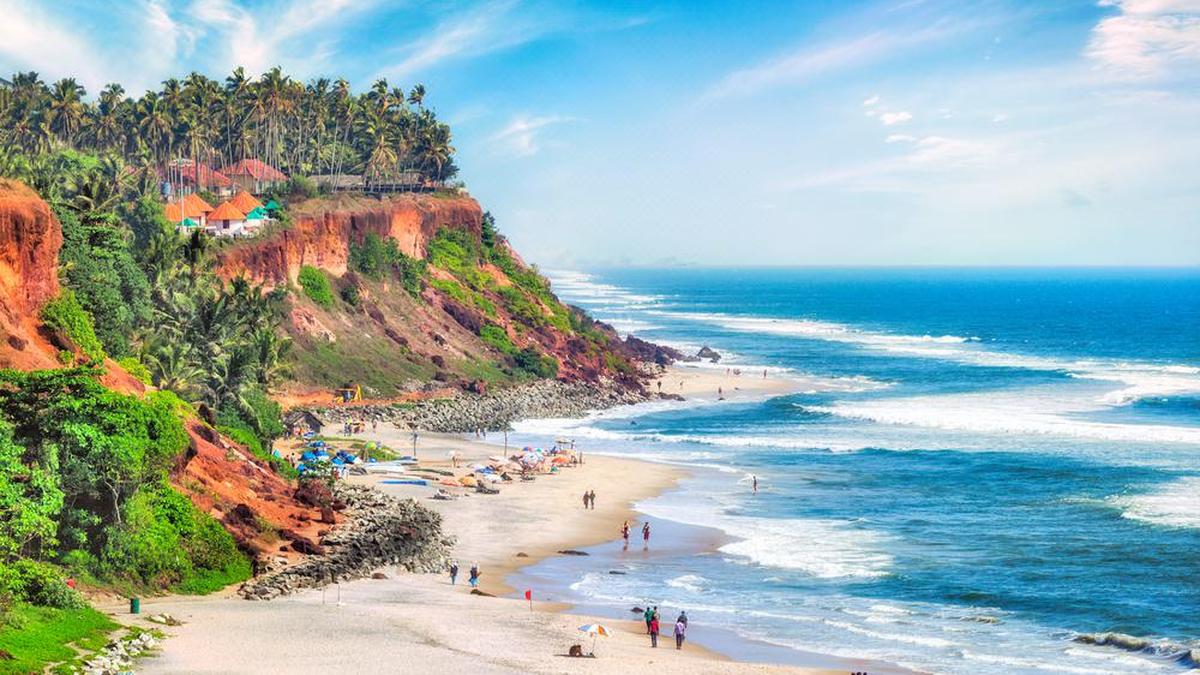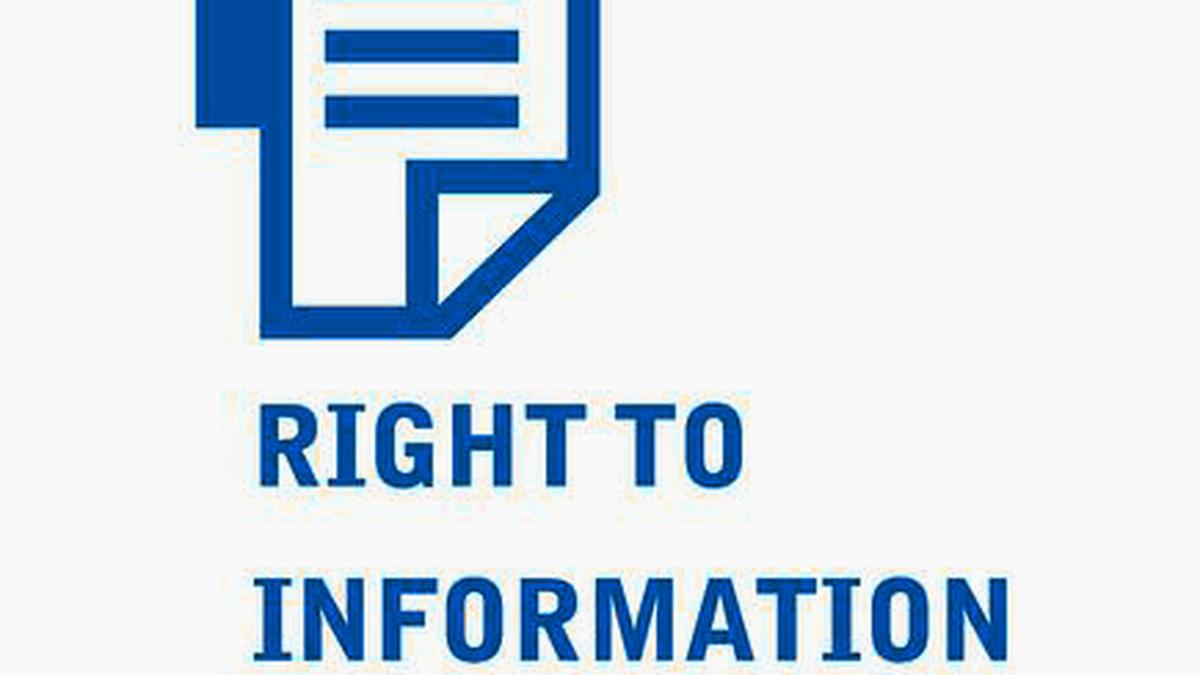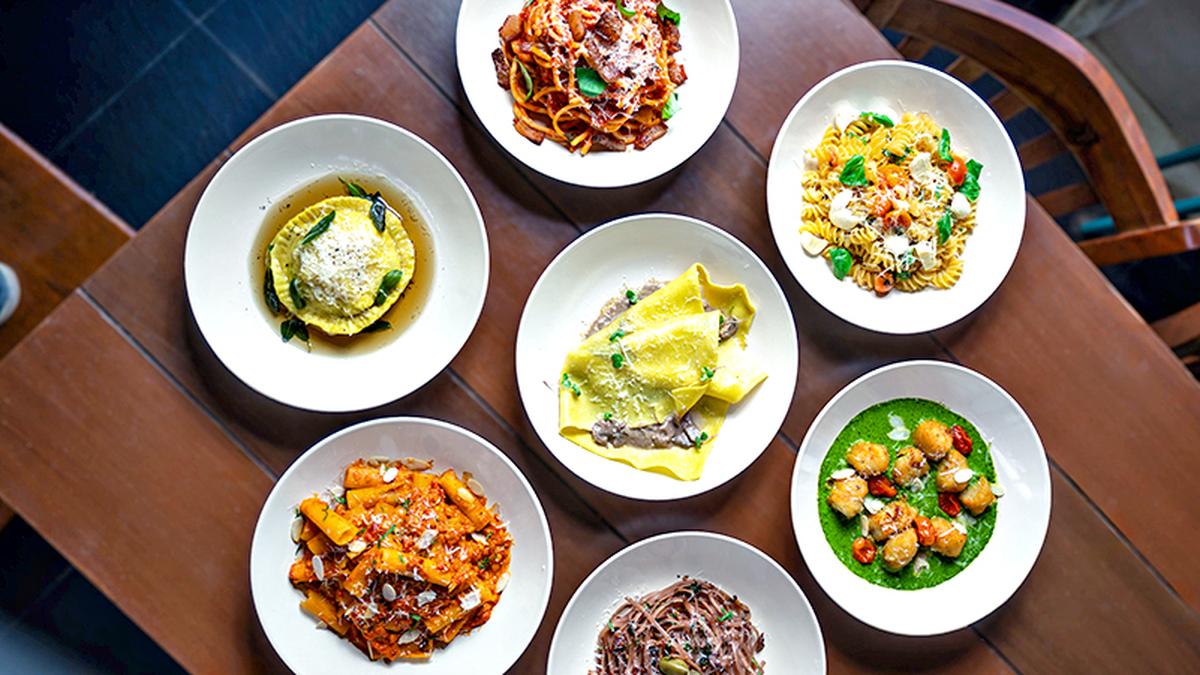
Two depictions of Rettala Venkatachalam aka Abboyi Chetty, a Dubash, at the Chenna Kesava Perumal Temple. Photo: Sruti Magazine
This being the 250th year of birth of the composer Muthuswami Dikshitar, I spend a lot of time pondering over, researching, and writing on his life. Not that there is any fresh ground on offer but when read in the context of his era, there is a lot to look into. And what I find, I write for Sruti, the magazine dedicated to the arts.
My latest had to do with Dikshitar’s stay in Madras, roughly between 1792 and 1795. His father had moved here en famille owing to an invitation from Manali Muthukrishna Mudali, Dubash to Governor George Pigot. It was this Dubash it will be recalled, who built the Chenna Kesava Perumal Temple in the 1770s at its present location and added a Chenna Malleeswarasawami Temple by its side. Just as the article went to press, Sukanya Shankar, who runs Sruti called to ask if I had any pictures of Muthukrishna Mudali. Enquiries with the Manali family too drew a blank and then I recalled that there are several impressive figures carved onto the pillars of the Chenna Kesava Perumal Temple with their names inscribed above or below, some in Telugu and others in Tamil. Could one of these be him?
A photographer was despatched to the shrine, and thanks to whatsapp, the pictures soon began coming in. Manali Muthukrishna Mudali proved sadly elusive, as did his son Venkatakrishna Mudali aka Chinnayyan. There were others of the Manali family though that did not help. What was intriguing however was the devout figure of another Dubash — Rettala Venkatachalam aka Abboyi Chetty. His importance at the shrine is made manifest by the fact that there are two depictions — one in stone in a bracket at the base of a pillar and other in plaster, in glorious multicolour.
As to what was Rettala Abboyi’s claim to fame otherwise is something of a mystery but what he did to merit inclusion in the temple is very clearly documented. I first came across this narration around 30 years ago, while reading a biography of the nagaswaram maestro TN Rajarathinam Pillai. In that, the author and veteran journalist Tumilan had written that an endowment made by ‘Rota’ Abboyi Chetty to the temple in the 18th century made it possible for the holding of an annual nagaswaram performance series during the time of the Peyazhwar festival, held here in July/August. Right up to the 20th century, this was the city’s most prestigious nagaswaram series to perform in and every artiste on that instrument aspired for an opportunity. Rajarathinam Pillai incidentally gave his first Madras performance under the auspices of this endowment.
These days the value of the principal and its interest-bearing capability having both eroded, the festival is not held. And then, George Town is no longer an area where Carnatic Music is heard, with the sole exception of the Raja Annamalai Manram of course. And so, Rettala Abboyi’s wishes are not fulfilled though he did have his fill of nagaswaram for two centuries.
I assume Rota in Tumilan’s book is an error for Rettala. But what is intriguing is that Prof P Sambamurthy, in his article Madras As A Seat Of Music (Madras Tercentenary Volume, 1939) has it that the nagaswaram endowment was by a Juttur Subramania Chetty! Now that is a name of which there is no record at all in the public domain. And so, Rettala Abboyi Chetty remains the most likely endower.
Taken all in all, the Dubashes of Madras, as in individual biographies and not broad historic trends, remains a most under-researched topic.
Published – September 24, 2025 06:30 am IST



